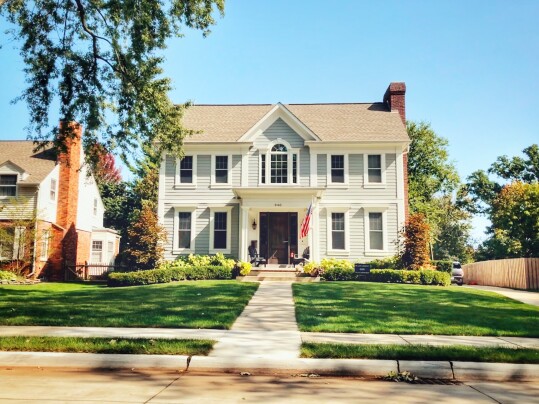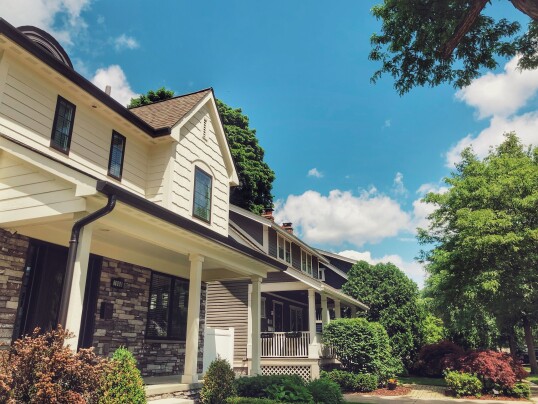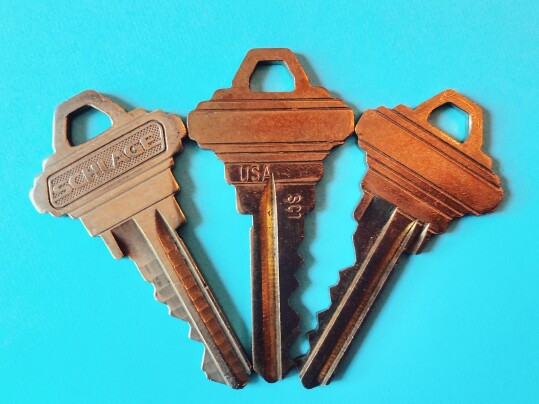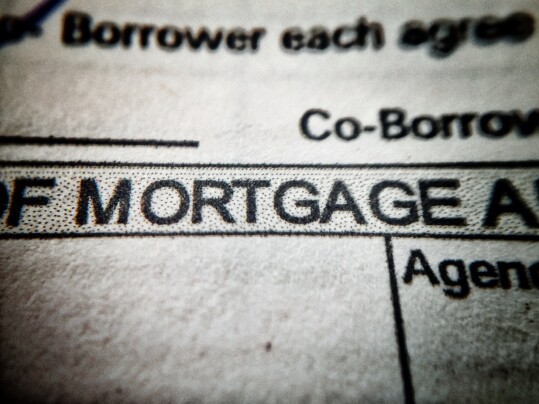A home is considered equity rich when the loan balances secured by the property are no more than half the home’s estimated value. In other words, if your home is worth twice what you owe on it, you’re equity rich. That’s a good situation for a homeowner to be in and, according to ATTOM Data Solutions, a lot of homeowners are currently reaping the benefits. “Homeowner balance sheets continue to benefit in a huge way from the boom times in the form of elevated equity that can be used to help finance all kinds of things, from home renovations to business startups,” Rob Barber, ATTOM’s CEO, says. But just how many homes can be considered equity rich? Well, according to ATTOM’s analysis, 45.8 percent of all mortgaged residential properties were equity rich in the first quarter. That’s down from 46.1 percent at the end of last year and about 1.5 percent lower than the first quarter of 2023. But while the number of equity rich properties has fallen over the past 12 months, it remains high. According to Barber, the spring buying season will help determine whether it continues to trend lower or a new long-term market pattern develops. (source)
Archive for May 2024
Number of Equity Rich Homes Remains High
Average Mortgage Rates Drop On Job News
According to the Mortgage Bankers Association’s Weekly Applications Survey, average mortgage rates fell last week from one week earlier. Rates were down across most loan categories, including 30-year fixed-rate loans with both conforming and jumbo balances, loans backed by the Federal Housing Administration, and 15-year fixed-rate loans. Mike Fratantoni, MBA’s senior vice president and chief economist, says the declines were due to a slower job market. “Treasury rates and mortgage rates fell last week on the news of a slowing job market, with wage growth at the slowest pace since 2021, and the Federal Reserve’s announced plans to ease quantitative tightening in June and to maintain its view that another rate hike is unlikely,” Fratantoni said. The news led to a 2 percent increase in demand for loans to buy homes. The MBA’s weekly survey has been conducted since 1990 and covers 75 percent of all retail residential mortgage applications. (source)
Survey Says Market Sentiment Has Plateaued
Housing market sentiment has plateaued, according to a new survey from Fannie Mae. Its monthly Home Purchase Sentiment Index asks participants for their feelings about buying/selling a home, mortgage rates, prices, their job, and financial situation. The latest results show consumer sentiment was largely unchanged from one month earlier, as Americans wait to see whether market conditions improve. Doug Duncan, Fannie Mae’s senior vice president and chief economist, says consumers are adjusting. “We think consumers’ generally improved sense of home-selling conditions bodes well for listings and housing activity, particularly for the segment of the population who may need to move for lifestyle reasons and have already begun adjusting their financial expectations to the current mortgage rate and price environment,” Duncan said. “However, for potential home buyers in less of a rush to transact, ongoing affordability challenges may continue to keep many of them on the sidelines.” (source)
How Fast Are Homes Selling Now?
Choosing a home to buy is a big decision. It’s also one that you may not have a lot of time to make. Inventory is still low in most markets across the country and that means homes for sale sell quickly – especially good ones. These days, interested buyers have to act fast if they see something they like. But how fast? Well, how long a home spends on the market depends a lot on where it’s located. In some parts of the country, homes are selling faster than others. A recent analysis looked at the top 100 most populated metro areas and ranked them by how quickly homes sold during the first quarter of this year. What it found was homes are selling fastest in the Northeast and Midwest and slowest in the South. Hartford, Connecticut had the fastest market, with a median of seven days spent on the market. The slowest selling markets were Austin and McAllen, Texas. Overall, though, time on market is increasing. In fact, the analysis found that, out of the top 100 metros, 95 saw the median days on market increase during the first quarter. (source)
Active Inventory Up Almost Everywhere In April
As a home buyer, you want more homes on the market. Not only will it increase the likelihood that you’ll find one that fits your needs and lifestyle, it’ll also help keep prices in check. Simply put, if the inventory of homes for sale is rising where you’re looking to buy, you’re going to have an easier time. The good news, according to new numbers from the National Association of Realtors’ consumer website, is active inventory is rising. In fact, it was up almost everywhere in April. Active inventory spiked in all four regions of the country compared to year-before levels. The South saw the biggest gains, with inventory up 43 percent year-over-year. Elsewhere, the West experienced a 27.4 percent increase and the Midwest was up 17.6 percent, while the Northeast climbed 4 percent. Rising inventory is a good sign for home buyers and, if the trend continues, will lead to a better balanced – and less volatile – housing market. (source)
May Is The Month With The Biggest Seller Premiums
Spring is home selling season and the month of May is right in the middle of it. That makes it a great time to list a house for sale. In fact, according to a new analysis from ATTOM Data Solutions, it’s the best month of the year to sell a home. Why? Well, ATTOM looked at 59 million home sales over the past 13 years to determine how much above their estimated market value homes sold for in each month of the year. What it found was that home sellers who listed in May saw the biggest premiums at 13.1 percent above market value. That’s a significant benefit to listing your home now as opposed to later in the year. But while May leads the list, other months aren’t that far behind. According to the results, February, March, April, and June all have premiums above 12 percent, with June sellers seeing a 12.4 percent premium. That means, if you’re not ready to sell just yet, you’ll still have a chance to get your home on the market in time to enjoy a spring premium. (source)
Inflation Persists, Keeps Mortgage Rates High
According to the Mortgage Bankers Association’s Weekly Applications Survey, average mortgage rates moved higher last week for 30-year fixed-rate loans with conforming loan balances and those backed by the Federal Housing Administration. Jumbo loans, 15-year fixed-rate loans, and 5/1 ARMs all saw decreases from one week earlier. Mike Fratantoni, MBA’s senior vice president and chief economist, says inflation is keeping rates elevated. “Inflation remains stubbornly high, and this trend is convincing markets that rates, including mortgage rates, are going to stay higher for longer,” Fratantoni said. “No doubt, this is a headwind for the housing and mortgage markets, with the 30-year fixed mortgage rate increasing to … the highest level since November 2023.” Higher rates led to slower mortgage demand last week, with demand for loans to buy homes down 2 percent from one week earlier. The MBA’s weekly survey has been conducted since 1990 and covers 75 percent of all retail residential mortgage applications. (source)







